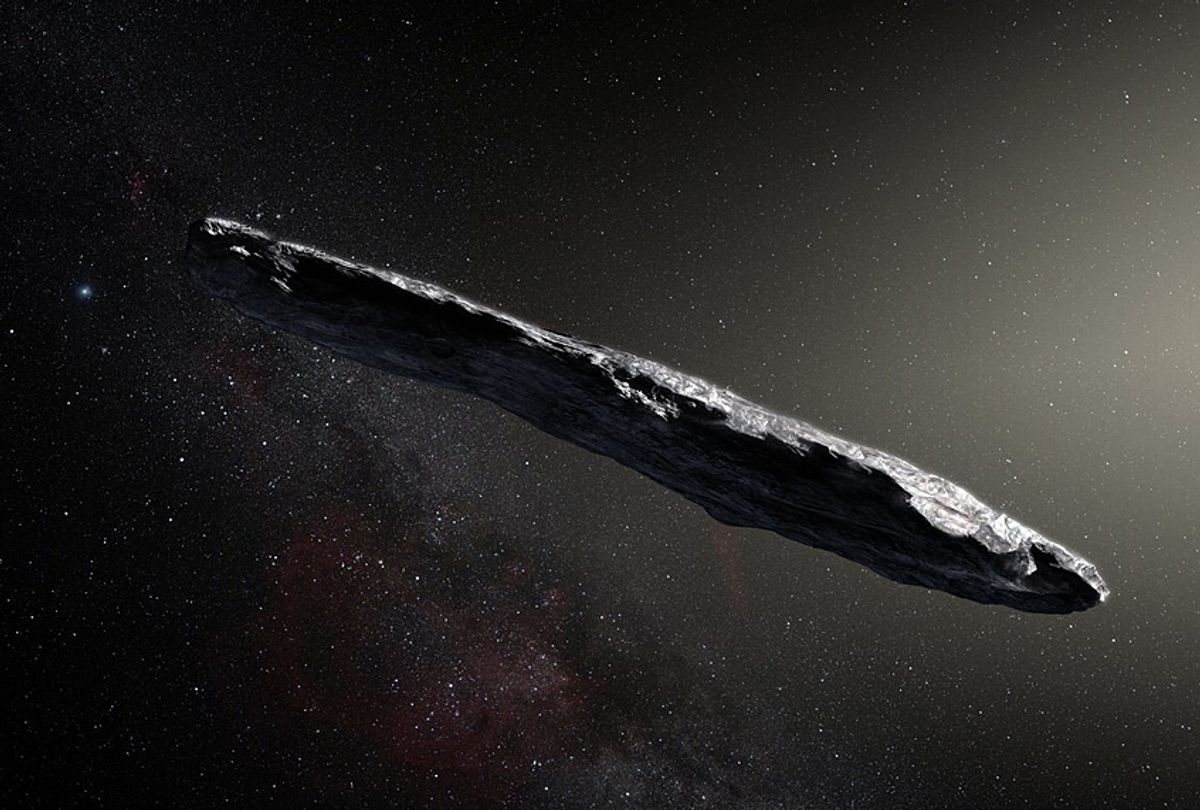There’s a new update on the voyage to Earth's galactic neighborhood that a foreign asteroid made in October 2017. According to a new report, it is possible that interstellar visitor ‘Oumuamua, a mammoth, cigar-shaped rock, was hurled towards our solar system from the gravitational slingshot of a binary star system.
As the first observed interstellar asteroid, 'Oumuamua posed a puzzle for astronomers. Solar system matter, from rocks to planets to asteroids, generally stays within the gravitational confines of its host star or stars. 'Oumuamua's appearance in our solar system was a surprise and suggested it had been flung here by some kind of energetic gravitational slingshot — which could be explained by its origins in a binary star system, scientists say.
A binary system comprises two gravitationally bound stars, not one like our Sun. Gravitationally-bound solar systems comprising two or even three stars (trinaries) are quite common in the universe; many stars visible in the night sky, including the brightest star, Sirius, are binaries.
The finding was published in the journal Monthly Notices of the Royal Astronomical Society.
"It's remarkable that we've now seen for the first time a physical object from outside our Solar System," said lead author Dr. Alan Jackson in a statement.
Jackson and collaborators used computer models to find that objects like ’Oumuamua are more likely to come from binary than single star systems, due to the stronger gravitational fields of binaries. The study also concluded that ’Oumuamua likely came from a system “with a relatively hot, high mass star," as "such a system would have a greater number of rocky objects closer in.”
‘Oumuamua, which is Hawaiian for "an object from afar," was first observed by a postdoctoral researcher at the University of Hawaii who was sifting through the data stream from the Pan-STARRS astronomical survey of the sky. The researcher noticed the object was highly elongated, like a stick, with a long axis 10 times longer than its short axis. Researchers suggested its shape would minimize abrasions from interstellar gas and dust, thus being an ideal shape for an interstellar spacecraft.
Scientists at Breakthrough Listen, a global astronomical program searching for evidence of civilizations beyond Earth, used the Robert C. Byrd Green Bank Telescope in Green Bank, West Virginia, to see if they could hear any radio signals being emitted by the object which could be indicative of extraterrestrial life. They heard nothing.
Still, the latest finding could help refine techniques for observing future interstellar visitors.
"It's really odd that the first object we would see from outside our system would be an asteroid, because a comet would be a lot easier to spot and the Solar System ejects many more comets than asteroids," Jackson said.

Shares